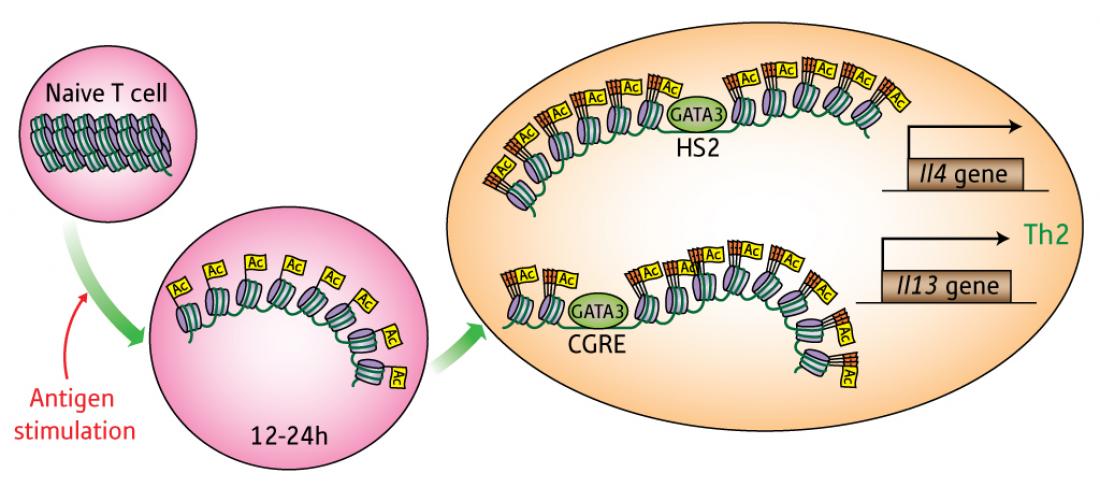Figure 1: Naïve T cells (left) begin to mature into TH2 cells within 12–24 hours of being stimulated by the presence of a foreign antigen (middle). As a component of this process, a ‘master switch’ protein drives the production of TH2 cytokines IL-4 and IL-13 by binding to and promoting chemical modification in the vicinity of the HS2 or CGRE sites, respectively (right).
As part of the immune response to foreign antigens, naïve T cells mature into different types of helper T cells. TH1 cells and TH17 cells, for example, secrete a subset of signaling factors known as cytokines that promote inflammatory responses to viral infections, while TH2 cells secrete cytokines that promote antibody secretion by B cells and drive allergic reactions.
The GATA-3 protein is known as a ‘master switch’ for TH2 differentiation, stimulating production of cytokines such as interleukin (IL)-4 and IL-13, but new findings from a team led by Masato Kubo at the RIKEN Center for Allergy and Immunology in Yokohama have revealed an unexpected degree of complexity in this activation process[1].
“The idea that genes encoding TH2 cytokines are coordinately regulated … has been widely accepted,” says Kubo. Many of these genes are situated in the same chromosomal neighborhood, and some scientists believe that the chromosome physically loops so that DNA-bound GATA can regulate multiple sites simultaneously. However, Kubo and colleagues found that GATA appears to independently bind multiple, distinct sites that each confer regulatory control over individual TH2-associated genes.
One of these sites, HS2, specifically governs IL-4 expression, and GATA binding at this site induces chemical modification of the DNA segment containing the Il4 gene, leading to increased cytokine production. Naïve T cells from mice lacking this chromosomal region give rise to TH2 cells that generate normal levels of most cytokines, but fail to produce IL-4; these animals also show fundamental defects in their allergic response.
In parallel, the researchers identified a second GATA-binding site, CGRE, which specifically regulates production of IL-13. Like HS2, GATA interaction with this site is associated with targeted chemical modification of a nearby stretch of DNA containing the Il13 gene, and disruption of CGRE essentially eliminates production of this cytokine while leaving IL-4 production unaffected (Fig. 1). “These results came as a surprise,” says Kubo. “They indicate that the independent recruitment of GATA-3 to locus-specific regulatory elements controls the expression status of individual genes encoding TH2 cytokines.” These findings also parallel previous data suggesting that GATA coordinates expression of IL-5, another TH2 cytokine, independently of IL-13.
Other types of immune cells also secrete TH2 cytokines, and Kubo and colleagues now hope to determine whether their findings represent a broadly used mechanism for regulating production of these cytokines. “Our next priority will be exploring the relative contribution of these discrete elements to transcriptional regulation of IL-4 and IL-13 among these cell types,” he says.
The corresponding author for this highlight is based at the Laboratory for Signal Network, RIKEN Research Center for Allergy and Immunology



